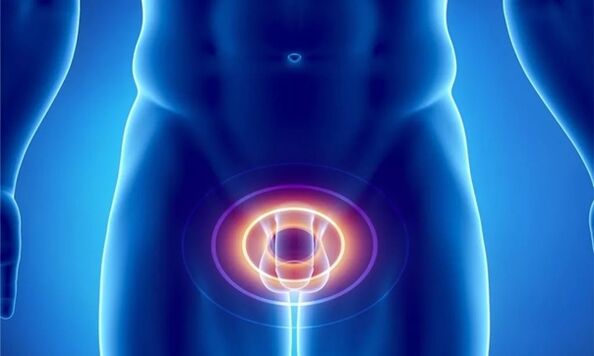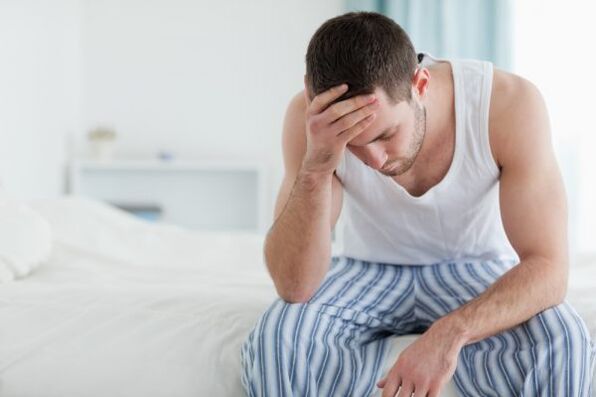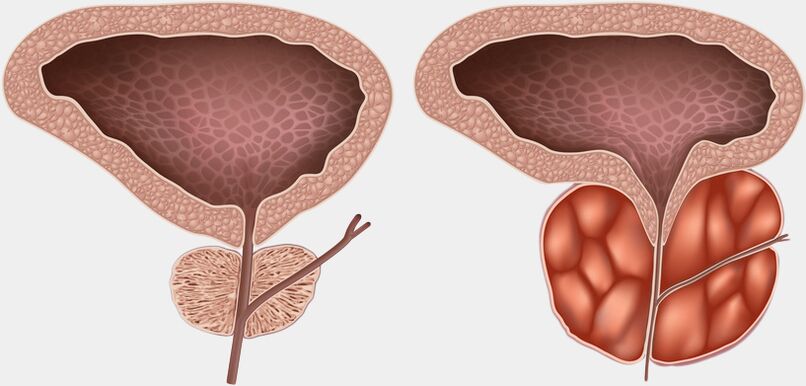
The prostate plays an important role in the function of the male body-it normalizes the presence of sperm, dilutes sperm, and participates in regulating hormone levels.
Today, male prostatitis is quite common. According to statistics-30% of men aged 30-55 suffer from this pathology, which is an inflammatory phenomenon of the prostate.
Forms of prostatitis
Experts distinguish several types of pathology:
- Chronic bacteria-chronic pathological types caused by bacterial infections;
- Chronic bacteria-a chronic inflammatory process caused by non-infectious causes;
- Acute pathology-chronic pain episodes concentrated in the genital area;
- The asymptomatic form of pathology is difficult to determine, and can usually only be determined after regular preventive examinations.
Signs of developing prostatitis
What are the manifestations of prostatitis? Usually, a doctor will determine 6 signs that indicate prostatitis. If a man notices at least 2 signs in this list, he should definitely consult a doctor:
- A short-distance, weakly descending urine stream;
- Difficulty urinating;
- Pain during urination;
- Duration of urination, urine splash, intermittent flow;
- Partial emptying of the bladder;
- I often want to urinate, especially at night.
The doctor will always be able to determine the first sign of male prostatitis, and promptly treat it after diagnosis, and obtain a positive result.
Pathological reasons
Experts talk about the causes of the disease as follows:
- Weakened immunity-reduces the protective barrier to prevent many viral infections;
- Infection process-viral components, microorganisms, and bacteria enter the prostate through the blood or lymph route. A sign of this phenomenon is increased body temperature in prostatitis;
- Sedentary lifestyle-leading to interruption of blood supply and hypoxia;
- The blood circulation is interrupted due to the stagnation of the genital area-due to mixed sex life, long-term abstinence, irregular sexual intercourse.
Prostate inflammation may begin due to microbial penetration, but for the development of infection, a pathogenic microbial community is needed, which may be caused by the following factors-the presence of harmful addiction, constipation, hormonal disorders, trauma, hypothermia, etc.
Pathological symptoms
What are the manifestations of prostatitis? An important symptom indicating the onset of prostatitis is difficulty urinating, and pain at this time. Frequent emptying of a small part of the bladder indicates the development of pathology. Therefore, in this case, you must consult a doctor, otherwise the inflammation will turn into a chronic structure.
The initial stage of pathology may be asymptomatic. The acute form of the disease is easier to determine-the pathological manifestations are always sudden and sharp. It should be considered that the course of the disease is caused by the individual characteristics of each person's organism.
Distinguish the following symptoms of prostate inflammation:
- Pain in the perineum area;
- Temperature rise
- Defecation is accompanied by painful episodes;
- Barriers to effectiveness;
- Frequent urination
- Increased sweating;
- General malaise
- A feeling of fullness in the bladder;
- Irritability, sudden mood swings;
- The excretion of the urethra during defecation.
Usually, only the above points will appear.
Temperature rise
The development of acute pathology is characterized by body poisoning, fever, and the temperature of prostatitis can reach 40 degrees. The pathological symptoms exhibited-irregularities in the urination area. Acute prostatitis needs to be treated in time, otherwise it will lead to undesirable consequences until surgery.
The long-term decision to receive medical examinations will affect the pathological changes to chronic forms, which have long-term development and require a lot of treatment costs.
Pain episodes that follow pathology
The complex structure of prostatitis is accompanied by painful symptoms. The pain of male prostatitis is not characterized by precise positioning. In the absence of treatment, the onset of pain will increase and spread to other genitals. In advanced cases, the acute stage of the disease, known as adenoma, occurs.
As we all know, the pain of male prostatitis is short-term and long-lasting.
Frequent episodes of pain can lead to an uncomfortable lifestyle, the development of male neurosis, and reduce the quality of life.
Painful feelings usually occur at the following moments:
- When urinating;
- During erection;
- During intercourse
- After sexual intercourse is completed;
- During bowel movements;
- Disordered sexual relations due to prolonged abstinence, or vice versa;
- After hypothermia;
- Due to severe physical stress.
When the pathology develops outside the prostate, pain in the lower back begins. The onset of pain is dull or sharp. Because of ignoring the pathology, the painful feeling will last a long time. Therefore, it is very important to consult a urologist in time, because inflammation can affect the kidneys.

In addition, the pathological features of the prostate area are dull or severe pain in the groin area, and rarely in the legs.
Use the following methods to eliminate pain:
- Prostate massage
- Phytotherapy
- Hormonal methods to treat pathologies;
- Special diet that normalizes a person's illness;
- Antibacterial methods to eliminate harmful elements;
- Use adrenergic blockers to relieve urination.
Prostate adenoma or prostatitis?
Prostatic adenomas are benign tumors in the prostate area, and this pathology is usually observed in men 45-50 years later. Hormonal imbalance is considered to be an important cause of pathology-over the years, the level of male hormones has changed and decreased. There are also risk factors that can lead to pathology-obesity, stress, atherosclerosis, harmful addiction.
The pathological performance is obvious, so it is already in the first stage of its development, and the diagnosis can be established accurately.
The course of male prostate adenoma is characterized by forward movement and development, and the tumor triggers a new clinical moment.
The symptoms of prostate adenoma and prostatitis are similar in the representatives of the strong human beings-frequent dysuria, burning sensation and pain in the prostate.
The course of male prostate adenoma depends on the stage of this pathology.
The consequences of male prostate adenoma are serious-renal failure, cystitis, urolithiasis.
Diagnostic measures
Doctors can recognize the signs of male prostatitis and promptly treat them. To determine prostatitis, it is necessary to consult a urologist, who will conduct an examination and prescribe other important diagnostic procedures:
- Medical examination to draw general clinical pictures;
- Have a urine test;
- STD detection test;
- To determine whether there is an infection, remove the swab from the urethra;
- Ejaculation analysis;
- Genital ultrasound
- Urography;
- Biopsy-if cancer is suspected.
Using the results of the above process, the doctor formulates a treatment plan for the disease for a given patient.
Methods of treating prostatitis
How to treat this pathology? After the diagnosis of the disease, the doctor determines the treatment plan for the pathology, usually using a comprehensive method, including the following points:
- Antibacterial treatment method-The expert prescribes a course of antibiotics to eliminate harmful trace elements that cause prostatitis. They can also lower the temperature;
- Physiological effects, for example, through laser, ultrasound, electromagnetic waves.
- Use traditional treatment methods-warm baths with herbs;
- Massage is performed in the prostate area-it prevents the catheter from stagnation and increases the blood supply to the genitals;
- Herbs-use decoctions from useful medicinal materials, dietary supplements help strengthen the immune system and fight infections;
- Psychotherapy-Men have negative psychological problems due to prostatitis, loss of confidence, and fear during intercourse;
- Surgical treatment is used in advanced and severe stages of pathological development, such as prostate abscess;
- Immune system correction-doctors may prescribe the intake of certain vitamins, minerals, and beneficial trace elements to enhance the patient's immunity;
- Balance, proper prostatitis nutrition, refusal of alcoholic beverages, smoking, high-fat foods, limit salt intake, and drink more regular water-at least 2 liters a day.

Precaution
It is important to monitor your health. In order to prevent the development of prostatitis, it is necessary to avoid contact with factors that may cause it:
- Don't get too cold
- Eat a balanced, healthy diet;
- Do physical exercises and sports;
- Have sex with a regular partner to protect yourself from sexually transmitted diseases;
- Receive an annual examination by a urologist to diagnose the disease in a timely manner.

























